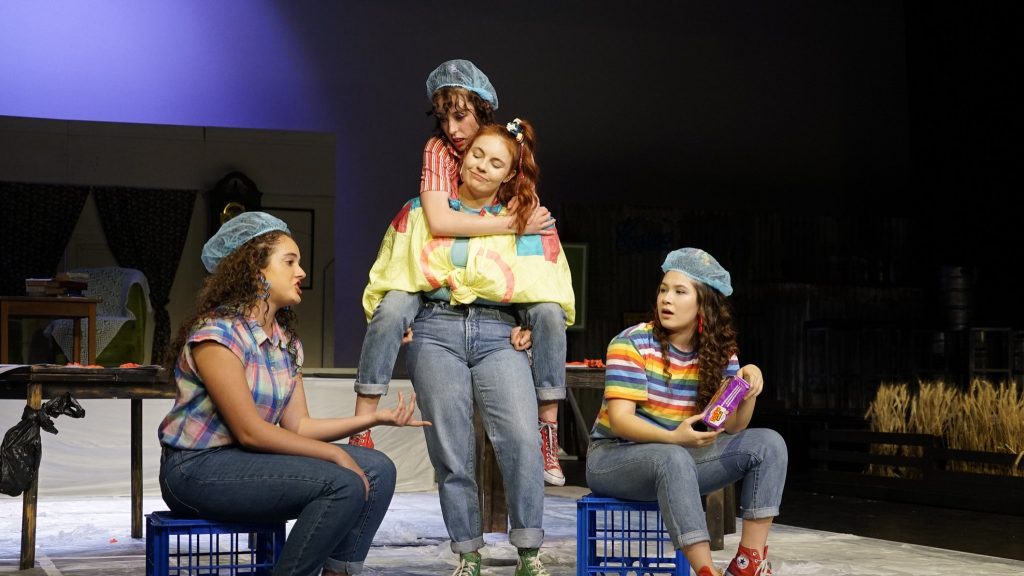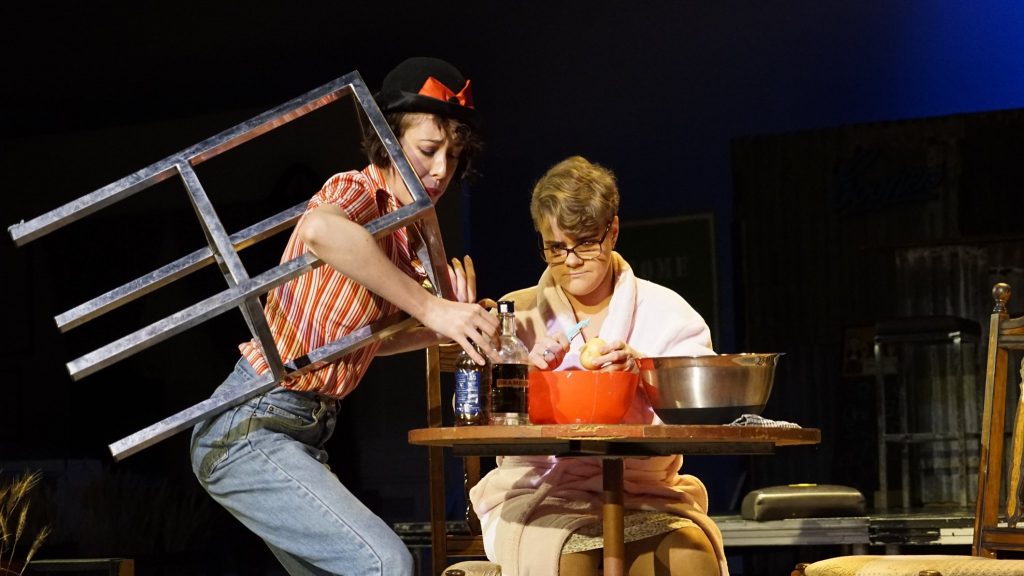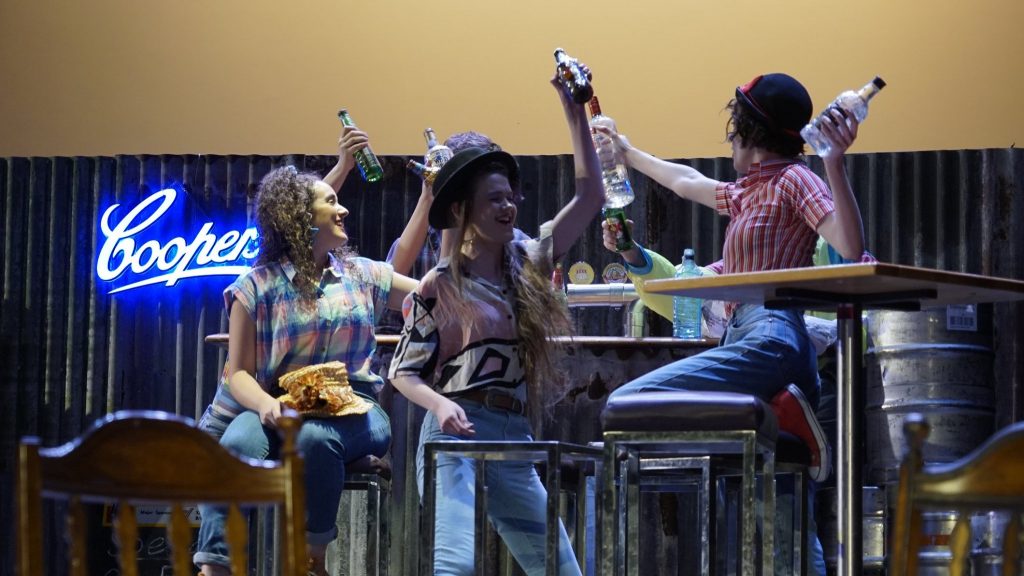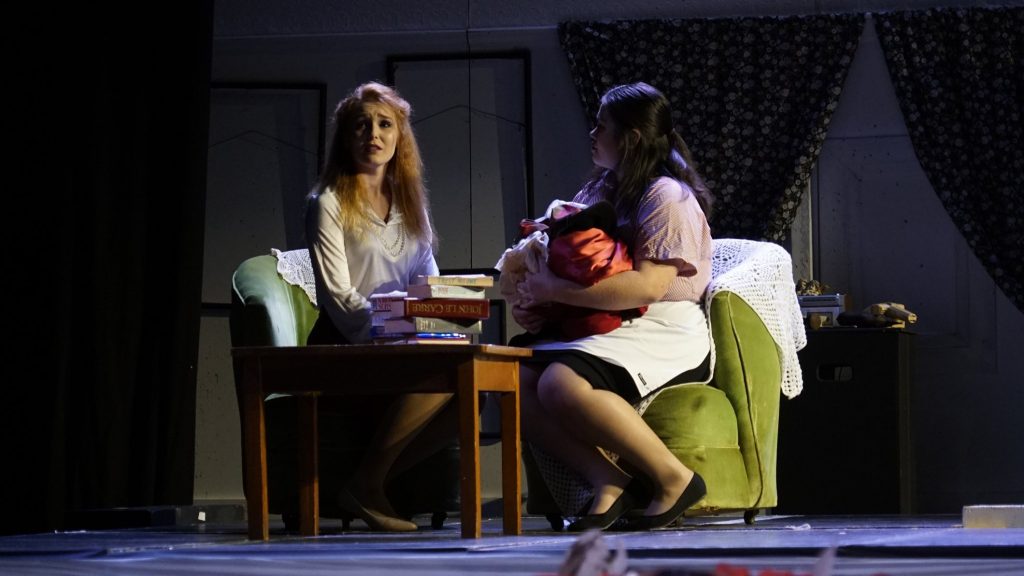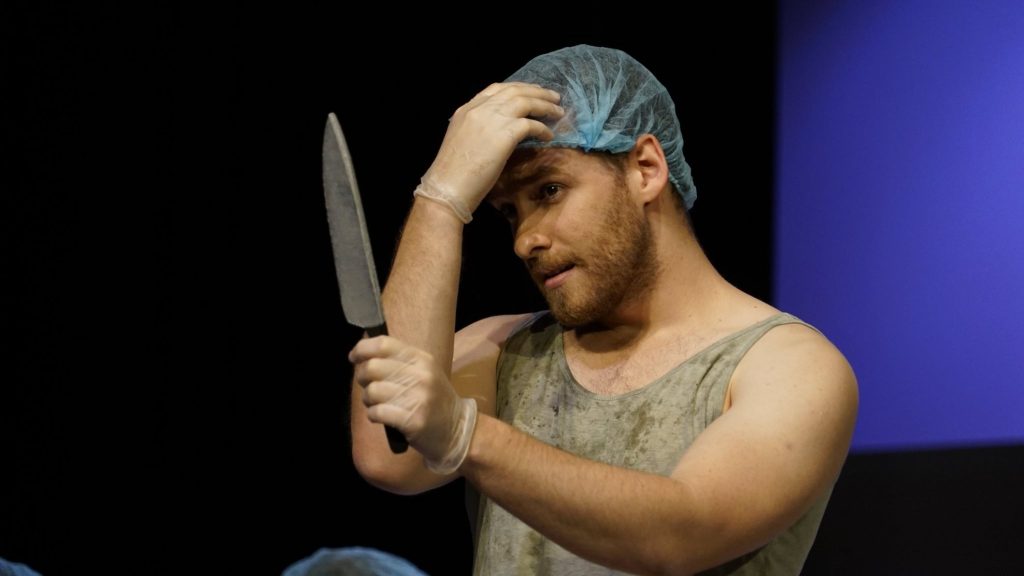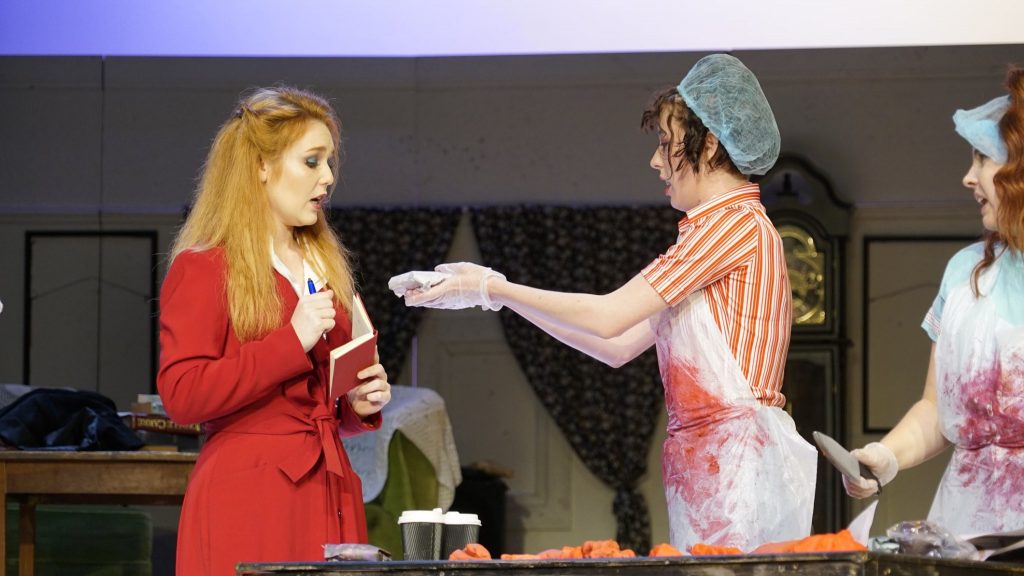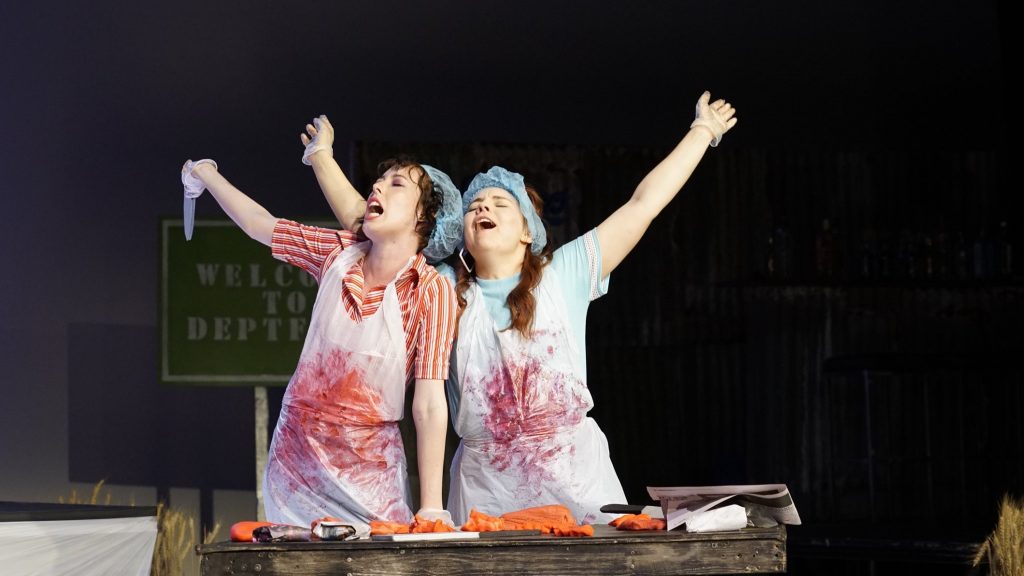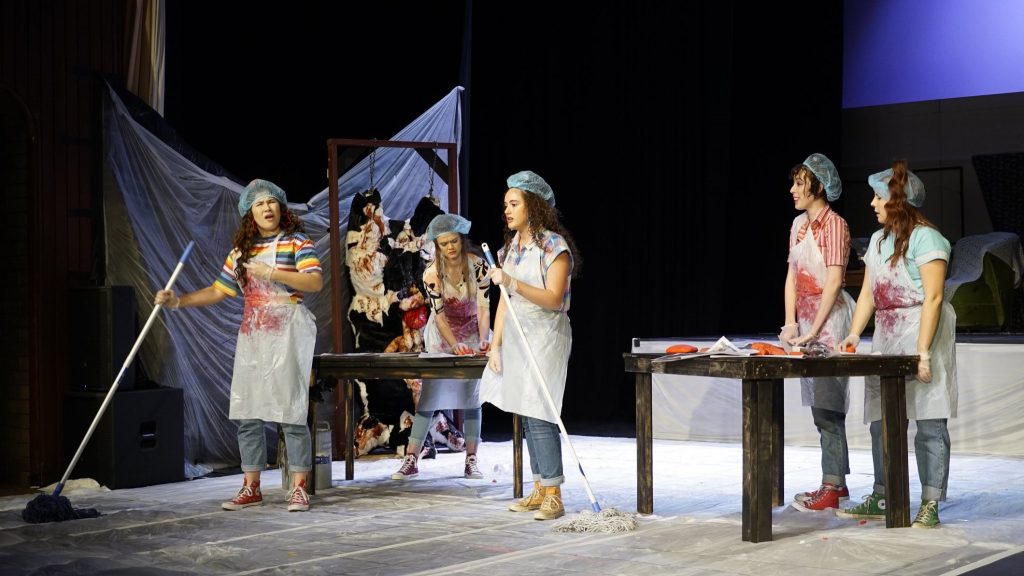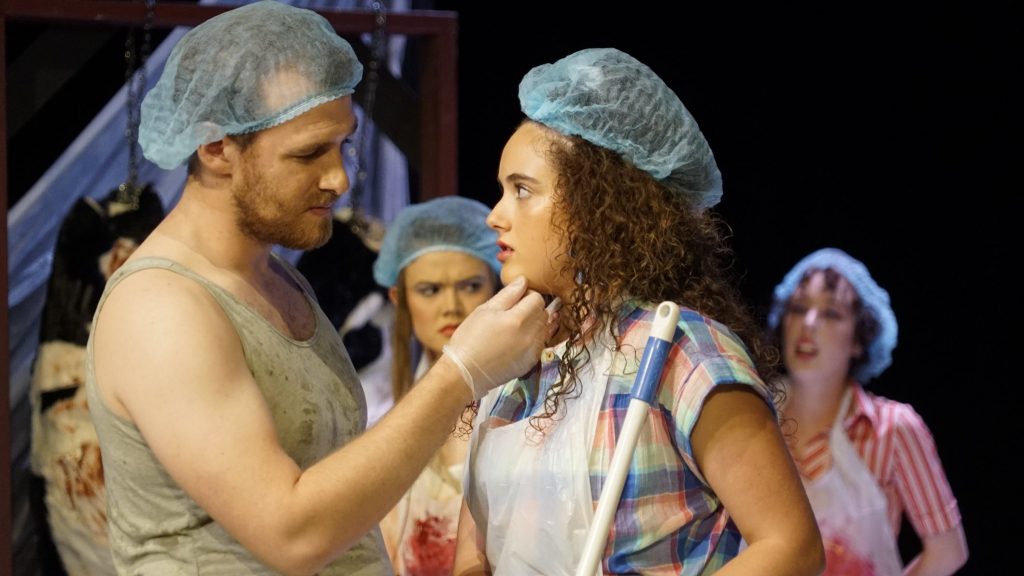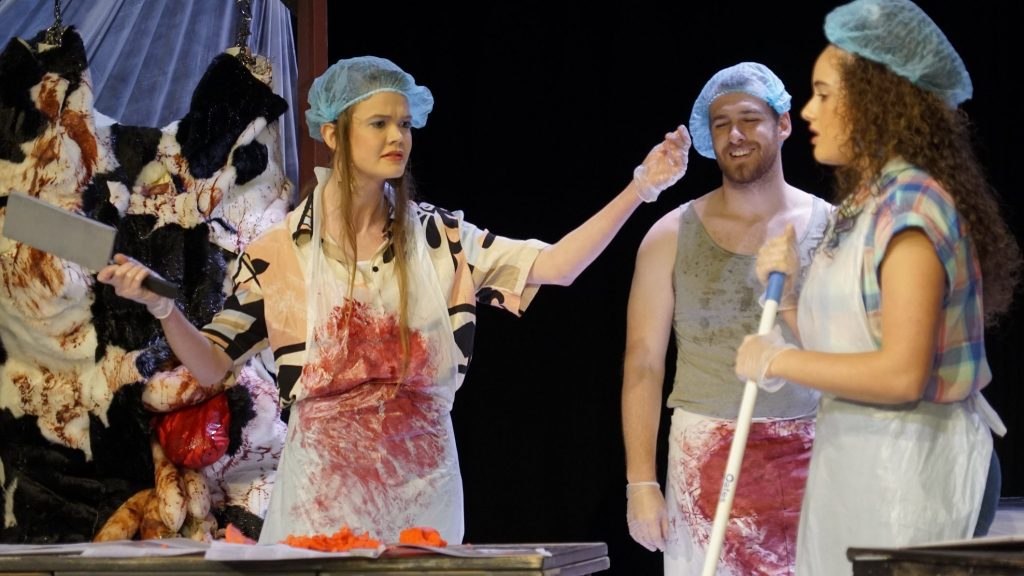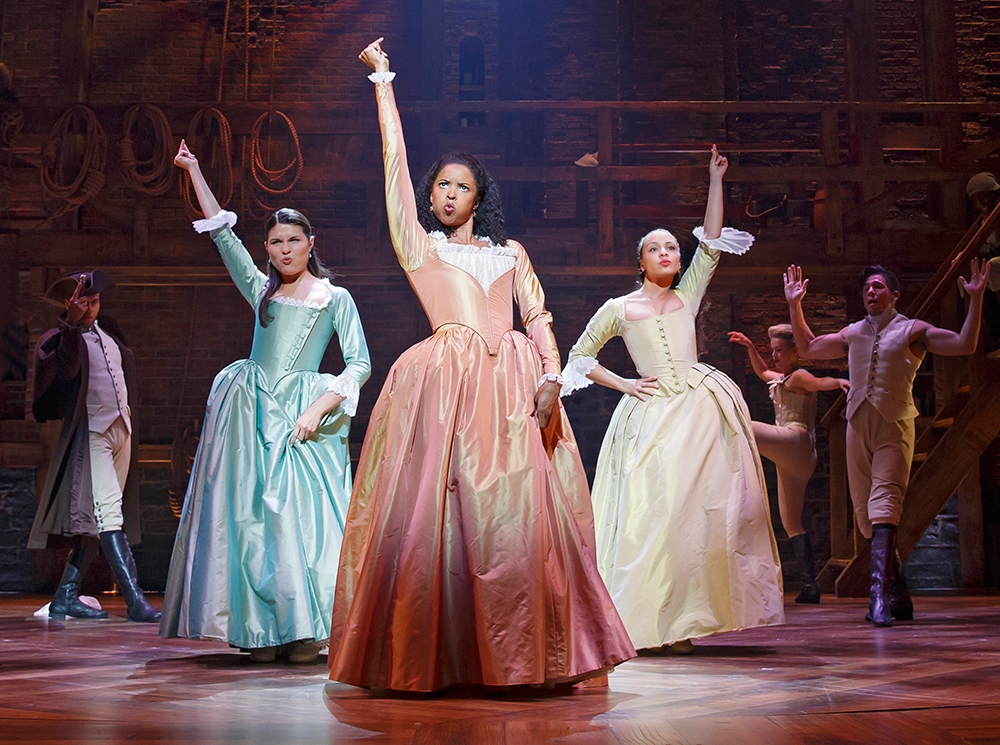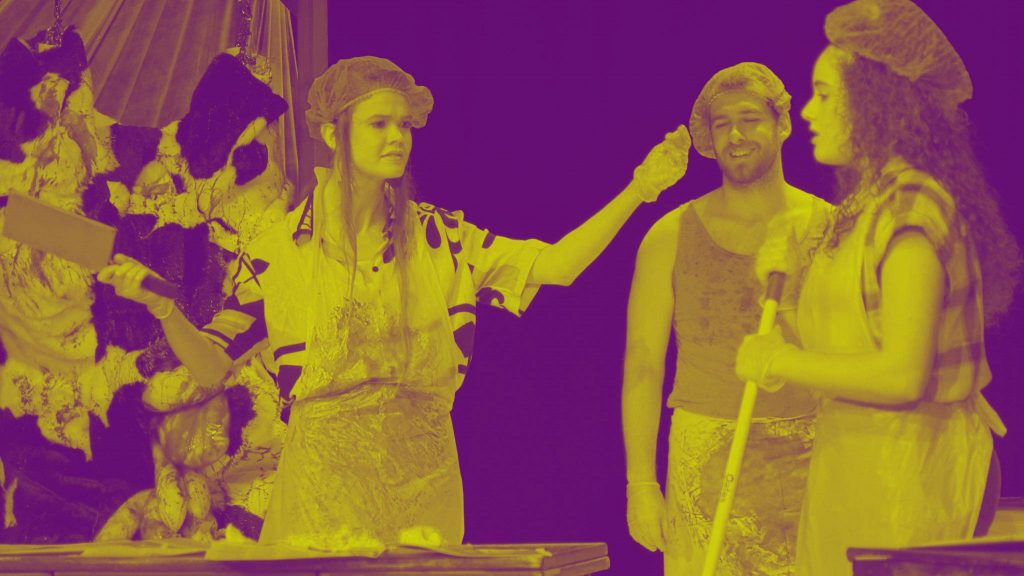
‘The Gut Girls’ // Underground Productions
‘The Gut Girls’ was unsettling.
Crude, thought-provoking and disconcertingly familiar, Underground Production’s latest play, ‘The Gut Girls’, provides a reflection on a society that has ceased to change since humankind began to function as we know it. In a world where people must conform simply to find a respectable wage and social standing, how do we maintain our individuality, and what happens when we do eventually succumb to society’s pressures?
‘The Gut Girls’, by Sarah Daniels, premiered in 1988 in London. The story takes audiences on a journey through the lives of five young women who work in a Deptford slaughterhouse dealing with – for want of a better word – the guts. Considered barely above the social status of a whore, they are taken, unwillingly, under the wing of one Lady Helena, who perceives their lives to be a misery. Convinced of her charitable cause, she is intent upon having the girls conform to societal expectations and thus transform them into women trained to serve the wealthy households of the time. What follows are the girls’ inner and outward conflicts between conformity, respectability and safety, versus their own freedom, dignity and individuality. As circumstances force the girls into positions of service in wealthy homes, we discover that sometimes the worst jobs bring greater life fulfilment, than those that society deems acceptable.
Co-directors, Isobel Green and Georgina Thompson, alongside Victoria Posner as dramaturg, made some bold and interesting choices. Originally set in London in the late 1800s, Green and Thompson decided to transport ‘The Gut Girls’ to 1980s Australia. While the parallels between the two eras, and even our own, were evident, some elements did not translate so well, including the large demand for Lady’s maids in 1980s Australia, and nobility conducting themselves in a way that ceased to exist beyond the second world war. As a result, the story felt as though it existed in two different time zones, around thirty years apart.
Nevertheless, transporting the show to a time and place more familiar to contemporary audiences allowed for people to make connections between their own experiences and those of the girls, giving impetus and greater meaning to the underlying messages. For this, Thompson, Green and Posner must be applauded.
Set design by Peter Carroll was detailed and effective. Making efficient use of the vast stage area that the Schonell Theatre comprises, the stage was split between four different settings – including the slaughterhouse, Lady Helena’s home, the local pub, and the home of the gut girls. These sets remained in place for the entirety of the show, allowing for smooth scene changes, as well as giving the audience a strong sense of place.
Details, including the contrast between the lavish upper class and more utilitarian lower class living spaces, subconsciously informed the audience of the characters. Some logistical issues were present, namely the floor of the slaughterhouse, which appeared to be made of sheets of thin plastic material, similar to plastic bags. While aesthetically pleasing at first, it became increasingly torn as it stuck to the shoes of anyone who walked on it; as well as being noisy and distracting to both audience and actors, and leaving a residue that meant movement anywhere else on the stage was also accompanied by sticky sounding footsteps. As the show continues its run, hopefully, this is an element that is quickly remedied.
Lighting by Alexandra Cook was simple and effective at focusing the audience’s attention and it created a sense of time within the story. Sound design by Henry Friend was a welcomed component, providing atmosphere and a sense of space, though the sound levels frequently competed with the actor’s dialogue on stage, making it difficult to understand words.
Victoria Barlow, as costume designer, allowed for each character’s personality to shine. In particular, her choice for the gut girls to wear lurid, ‘80s style, retro shirts accompanied by large earrings highlighted their individuality. This was especially noticeable when compared with the uniformity of women in service, and the demure, ‘acceptable’ upper-class clothing choices.
In terms of the technical side of the direction, Green and Thompson did well to convey the overall storytelling aspects and messages within the script. Some issues were evident, however, in terms of blocking, which caused characters to be upstaged by others, and further attention to the physical portrayal of male and female relationships in terms of proximity would have created more intriguing tension and power dynamics, particularly between Arthur and Priscilla. Greater focus overall would have aided the storytelling, as occasionally loud giggling, talking over each other, or irrelevant background action pulled focus from important plot points occurring concurrently.
With a large ensemble, the cast carried the story with great commitment and clear characterisation. Headed by the five Gut Girls – Polly (Madeleine Border), Maggie (Maddi Romcke), Annie (Biance Elisseos), Ellen (Brittany Hetherington) and Kate (Georgia Perry) – the group portrayed their characters with joyful abandon. The obvious camaraderie between the gang translated to the audience and their individual characterisation shone. Particular note should be taken to their brilliant physicalisation, which highlighted uninhibited freedom and lack of concern for societal expectations – a great contrast to the downtrodden restraint we see as they are forced to enter service.
The female aristocrats were portrayed by Julie Pendrith, as Lady Helena, and Bronagh McDermott as Priscilla. Pendrith showcased Lady Helena with all of the confidence and self-righteousness that the character deserved, and her comedic timing was impeccable. There was slight confusion over the use of her posh British accent, especially in 1980s Australia. This detracted from the character’s authenticity, coming across as too stereotypical and out of place. McDermott’s characterisation of Priscilla worked beautifully, and her meekness, but clear intelligence was conveyed successfully. McDermott’s performance was thoughtful and subtle, as we discovered the nuances to her character.
The supporting ensemble worked together and encapsulated their roles, displaying the social hierarchies and expectations in which “the gut girls” live.
As a whole ‘The Gut Girls’ was unsettling. Unsettling because it presented to us, a society in which, to gain respect and social acceptance, it is expected to conform. And with that conformity comes the stripping down of freedom and individuality. It was unsettling because such subjects are so familiar to our society today. This was a play which, originally set in the 1800s, transported to the 1980s, with parallels to 2019 – and with that it clearly transcended time.
‘The Gut Girls’ plays at the Schonell Theatre until Saturday, 7 September 2019. Tickets are available at TryBooking – The Gut Girls, Underground Productions.




